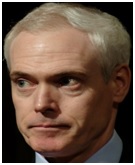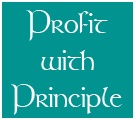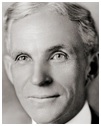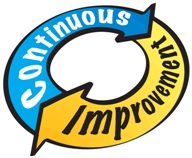|
 |
|
 |
Jim Collins and Jerry Porras, Built to Last (1994)
Collins is an American management expert on business success (pictured right). Worked at Stanford Business School in California with Jerry Porras (pictured right below), where they wrote the book.
See also... Jim Collins in the Management Gurus section.
Book summary
What is a great company? The best (“visionary”) companies are built to last, because they balance:
“To be built to last you must be built to change” (Jim Collins wrote in the preface to the 2004 edition) - see point 1 below.
What makes visionary companies great 1. Preserve the Core/Stimulate Progress Here are these six points in more detail:
1. Preserve the Core/Stimulate Progress A visionary company:
Core ideology (the organization’s soul and character) consists of
This core ideology:
Two further points... a) core ideology helps global companies A global visionary company applies its core ideology globally but changes its practices and strategies to suit local cultures and markets.
b) don’t confuse strategy with ideology For example, quality may be a vital strategic objective but not a core value (why? Quality won’t be an everlasting value, if competitors achieve the same quality)
Examples of core values Merck (American pharmaceutical company)
Walt Disney
Sony
Examples of core purpose
Merck To preserve and improve human life
Walt Disney To make people happy
Sony To experience the joy of advancing and applying technology for the benefit of the public. 3M (makers of Scotch tape and Post-It notes) To solve unsolved problems innovatively.
2. Envisioned future This consists of two parts:
a) Big Hairy Audacious Goals (BHAG’s) Great companies set themselves extremely challenging objectives for 10-30 years ahead (BHAG’s). Examples are:
But don’t be complacent – when you’ve achieved a BHAG, immediately replace it with another.
b) Vivid description An inspiring description of what it will be like to achieve the BHAG. For example, Henry Ford (pictured right) wanted to make the price of a car so low that “everyone will have one”. Sony’s vivid description said: “Fifty years from now, our brand name will be as well known as any in the world... and will signify innovation and quality that rival the most innovative companies anywhere”.
3. Inspired employees Only one per cent of success is defining your core ideology and envisioned future, the rest depends on inspired people who brilliantly implement them. “The crucial variable is not the content of a company’s ideology, but how deeply it believes its ideology and how consistently it lives, breathes, and expresses it in all that it does”, Collins and Porras say. Visionary companies aren’t suited to everyone. They are “cult-like cultures” in which
company values are:
Companies will be great, only if their people truly believe in their values and purpose.
4. Genius of the AND Visionary companies don’t believe in choosing between two apparent opposites (the “Tyranny of the OR”) but doing both simultaneously (the “Genius of the AND”). For example:
5. Evolutionary progress To be successful, great companies don’t rely on strategic planning but evolutionary
progress through:
Improvement is achieved by focusing not on beating competitors but on constantly asking the question: “How can we improve ourselves to do better tomorrow than we did today?” Great companies:
6. Great leadership The best leaders are “clock builders, not time tellers”. In other words, they are most concerned with building a great institution (like the
Founding Fathers who created the American Constitution). Time telling (“having a great idea or being a charismatic visionary leader”) isn't so important in great companies. A charismatic visionary leader:
Leaders of great companies are much more likely (by a factor of six) to be promoted internally.
Key quote on corporate culture The crucial variable is not the content of a company’s ideology, but how deeply it believes its ideology and how consistently it lives, breathes, and expresses it in all that it does.
Key quotes on change Contrary to popular wisdom, the proper first response to a changing world is not to ask, “How should we change?” but rather to ask, “What do we stand for and why do we exist?” The very fact that purpose can never be fully realized means that an organization can never stop stimulating change and progress in order to live more fully to its purpose.
Key quotes on business success To be built to last you must be built to change (Jim Collins, preface, 2004 edition). The real question to ask is not “Is this practice good?” but “Is this practice appropriate for us - does it fit with our ideology and ambitions?”
Key quote on human resource management For it is through the power of human organization - of individuals working together in common cause—that the bulk of the world’s best work gets done
|
|
|
||
|
|
|
||
|
||
| Copyright © wisdomtowin.com All Rights Reserved | ||
|

















